
The Balducci levitation is a levitation illusion first described by Ed Balducci. Its inventor is unknown. It is an impromptu magic trick, which has been popularized by many magicians, such as David Roth, Paul Harris, and David Blaine.

Contortion is a performance art in which performers called contortionists showcase their skills of extreme physical flexibility. Contortion acts often accompany acrobatics, circus acts, street performers and other live performing arts. Contortion acts are typically performed in front of a live audience. An act will showcase one or more artists performing a choreographed set of moves or poses, often to music, which require extreme flexibility. The physical flexibility required to perform such acts greatly exceeds that of the general population. It is the dramatic feats of seemingly inhuman flexibility that captivate audiences.

Levitation or transvection, in the paranormal or religious context, is the claimed ability to raise a human body or other object into the air by mystical means.

Coin magic is the manipulating of coins to entertain audiences. Because coins are small, most coin tricks are considered close-up magic or table magic, as the audience must be close to the performer to see the effects. Though stage conjurers generally do not use coin effects, coin magic is sometimes performed onstage using large coins. In a different type of performance setting, a close-up coin magician will use a large video projector so the audience can see the magic on a big screen. Coin magic is generally considered harder to master than other close-up techniques such as card magic, as it requires great skill and grace to perform convincingly, and this requires much practice to acquire.
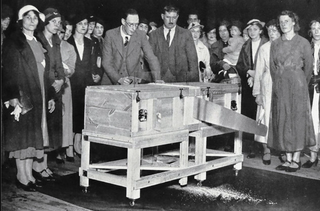
Sawing a woman in half is a generic name for a number of stage magic tricks in which a person is apparently cut or divided into two or more pieces.
The Asrah levitation, sometimes called Lighter than Air, is a classic levitation illusion.
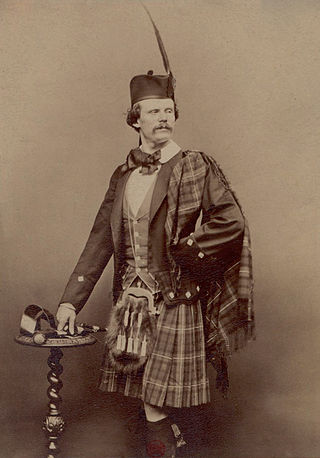
Daniel Dunglas Home was a Scottish physical medium with the reported ability to levitate to a variety of heights, speak with the dead, and to produce rapping and knocks in houses at will. His biographer Peter Lamont opines that he was one of the most famous men of his era. Harry Houdini described him as "one of the most conspicuous and lauded of his type and generation" and "the forerunner of the mediums whose forte is fleecing by presuming on the credulity of the public." Home conducted hundreds of séances, which were attended by many eminent Victorians. There have been eyewitness accounts by séance sitters describing conjuring methods and fraud that Home may have employed.
Navicular syndrome, often called navicular disease, is a syndrome of lameness problems in horses. It most commonly describes an inflammation or degeneration of the navicular bone and its surrounding tissues, usually on the front feet. It can lead to significant and even disabling lameness.
This is a glossary of conjuring terms used by magicians.
David Copperfield has performed a levitation illusion in several magic shows since 1992 in which he appears to fly on stage for several minutes, while surrounded by audience members. The flight is notable for its graceful motion and unencumbered appearance. The illusion was included in Copperfield's CBS TV special The Magic of David Copperfield XIV: Flying—Live The Dream (1992), and has been repeated several times during Copperfield's live tours around the world. The method was created by John Gaughan. An essential contribution to make fluid movements was given by his assistant, dancer and choreographer Joanie Spina.
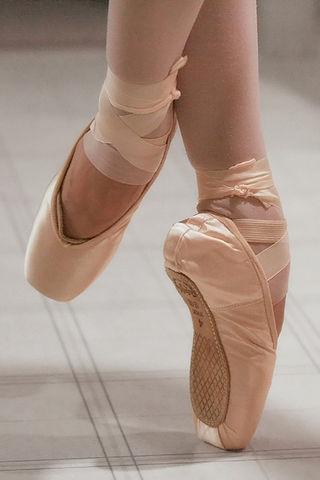
Tiptoe describes the human body posture and locomotion of removing the heel(s) of one or both feet from the ground. The term is mostly used colloquially when the weight is placed on the balls of the feet rather than literally on the tips of the toes; literal tip-toeing is difficult but possible, as in the pointe technique of ballet. In running, landing on the ball of the foot is known as forefoot strike.

A caulkin is a blunt projection on a horseshoe or oxshoe that is often forged, welded or brazed onto the shoe. The term may also refer to traction devices screwed into the bottom of a horseshoe, also commonly called shoe studs or screw-in calks. These are usually a blunt spiked cleat, usually placed at the sides of the shoe.
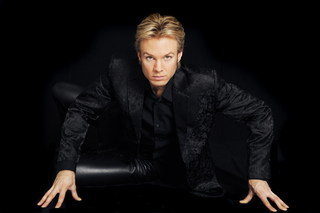
Peter Marvey is a magician and illusionist best known for his combination of sleight of hand and large-scale stage illusions.

Magic, which encompasses the subgenres of illusion, stage magic, and close-up magic, among others, is a performing art in which audiences are entertained by tricks, effects, or illusions of seemingly impossible feats, using natural means. It is to be distinguished from paranormal magic which are effects claimed to be created through supernatural means. It is one of the oldest performing arts in the world.

Ovo is a touring circus production by Cirque du Soleil that premiered in Montréal, Canada in 2009. Ovo's creator and director, Deborah Colker, took inspiration from the world of insects. The idea for Ovo was not to be about the acts, nor dancing, nor insects, but about movement. The movement of life permeates the entire show, with creatures flying, leaping, bounding, and crawling. Composer Berna Ceppas brought additional life to Ovo with a score inspired by the music of Brazil. Ovo means "egg" in Portuguese and represents the underlying thread of the show. Graphically, inside the logo of Ovo, is an insect. The two O's represent the eyes and the V forms the nose and antennas.
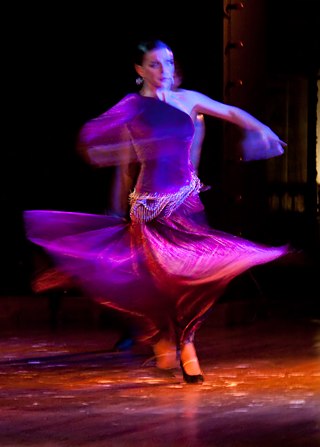
In dance and gymnastics, a turn is a rotation of the body about the vertical axis. It is usually a complete rotation of the body, although quarter (90°) and half (180°) turns are possible for some types of turns. Multiple, consecutive turns are typically named according to the number of 360° rotations.

Good conformation in the limbs leads to improved movement and decreased likelihood of injuries. Large differences in bone structure and size can be found in horses used for different activities, but correct conformation remains relatively similar across the spectrum. Structural defects, as well as other problems such as injuries and infections, can cause lameness, or movement at an abnormal gait. Injuries to and problems with horse legs can be relatively minor, such as stocking up, which causes swelling without lameness, or quite serious. Even leg injuries that are not immediately fatal may still be life-threatening to horses, as their bodies are adapted to bear weight on all four legs and serious problems can result if this is not possible.

A levitation illusion is one in which a magician appears to defy gravity by making an object or person float in the air. The subject may appear to levitate unassisted, or it may be performed with the aid of another object in which case it is termed a "suspension".














